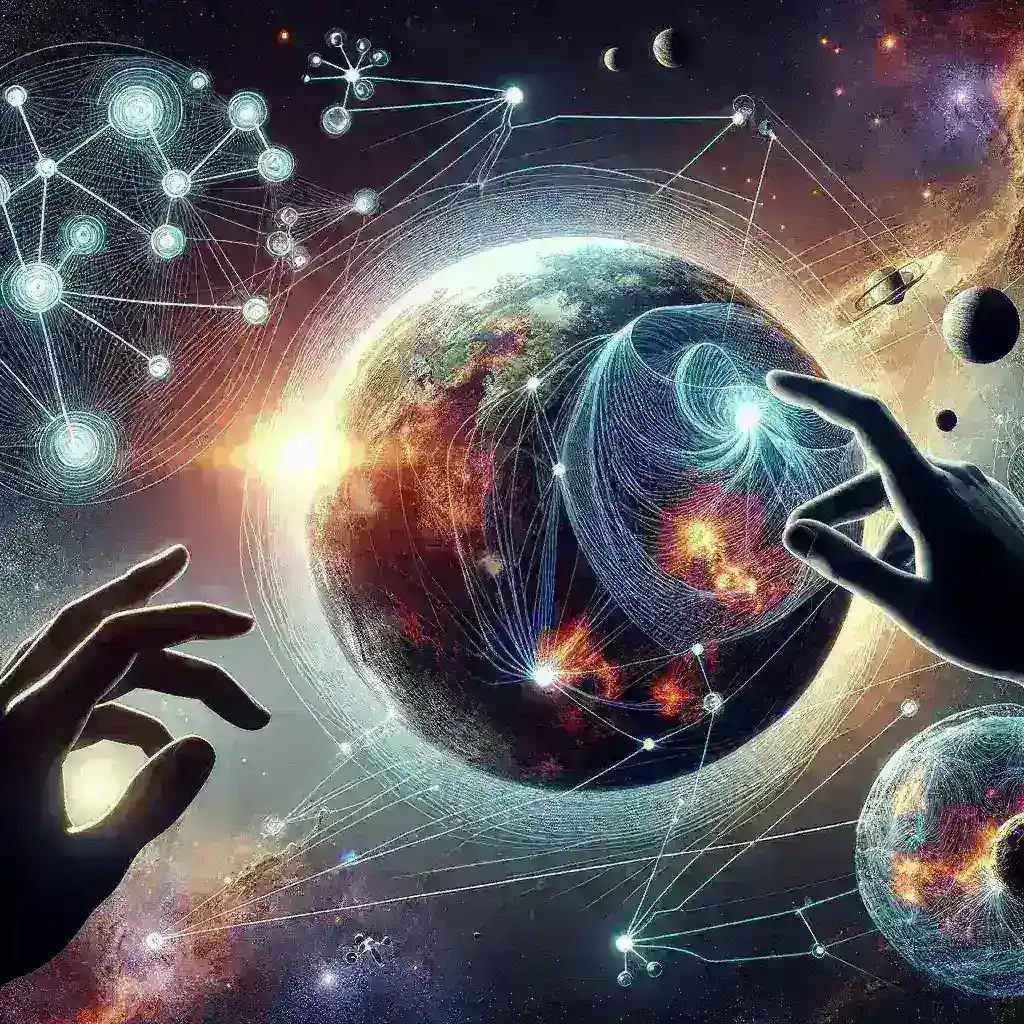Introduction
The early solar system is a fascinating subject of study, where numerous celestial bodies were in constant motion. Understanding how these planets migrated can provide critical insights into their current positions and configurations. With the advent of artificial intelligence (AI) and machine learning, researchers are now equipped with powerful predictive models to simulate these movements, allowing us to explore complex gravitational dynamics.
The Basics of Planetary Migration
Planetary migration refers to the movement of planets from their initial formation locations to their current orbits. This phenomenon is crucial for understanding the architecture of our solar system and has implications for the formation of planetary systems elsewhere in the universe. There are two primary types of migration:
- Type I Migration: This occurs for low-mass planets, such as Earth-like bodies, influenced by their interactions with the surrounding gas and dust.
- Type II Migration: This is associated with more massive planets, like gas giants, which can create significant gaps in the protoplanetary disk, affecting their paths.
The Role of AI in Simulating Planetary Migration
AI predictive models leverage vast amounts of data and advanced algorithms to simulate and analyze planetary migration. By utilizing machine learning techniques, scientists can uncover patterns and predict how planets would behave under different conditions. Some key aspects include:
Data Collection and Preparation
AI models require comprehensive datasets, which include historical data on planetary movements, gravitational forces, and the composition of the protoplanetary disk. Researchers compile this data from various sources, including telescopic observations and previous simulations.
Machine Learning Algorithms
Several machine learning algorithms can be employed to model planetary migration:
- Neural Networks: These models can learn complex patterns in data, making them suitable for predicting planetary movements.
- Regression Analysis: This statistical method helps in understanding the relationships between different variables, such as mass and distance from the sun.
- Reinforcement Learning: This approach allows models to improve their predictions through trial and error, simulating real-world interactions in the solar system.
Simulation Techniques
Researchers use various simulation techniques to visualize and analyze the results of AI models:
- N-body Simulations: These are used to simulate the gravitational interactions between multiple celestial bodies.
- Hydrodynamic Simulations: These focus on the behavior of gas and dust within the protoplanetary disk, crucial for understanding how planets migrate.
Historical Context of Planetary Migration Studies
The study of planetary migration has evolved significantly over the decades. Initial models were simplistic and often failed to account for the complexities of gravitational interactions. However, with advancements in computational power and sophisticated algorithms, modern simulations have become increasingly accurate. Early theorists like Pierre-Simon Laplace laid the groundwork for understanding gravitational forces, while more recent studies have utilized AI to refine these models.
The Impact of AI Models on Our Understanding of the Solar System
AI predictive models have revolutionized our understanding of the solar system’s formation and evolution. Through simulations, scientists can:
- Predict Planetary Positions: AI models can provide accurate predictions of where planets will be positioned in the future based on their initial conditions.
- Analyze Exoplanetary Systems: By applying similar models to other star systems, researchers can glean insights into how planets might behave in different environments.
- Reveal Insights into Early Solar Dynamics: Understanding how early planets migrated helps explain the current distribution of planets and the formation of features like the asteroid belt.
Future Predictions and Implications
As AI technology continues to advance, the simulations of planetary migration will only become more refined. Future models may incorporate:
- Real-Time Data Integration: The ability to update models with real-time data from ongoing space missions could enhance the accuracy of predictions.
- Interactivity: Researchers may develop interactive models that allow users to manipulate variables and observe the outcomes of different scenarios.
- Broader Applicability: AI models may be adapted for use in other fields, such as astrophysics and cosmology, to simulate various cosmic phenomena.
Challenges and Limitations of AI in Planetary Migration
Despite the advancements AI has brought to the study of planetary migration, there are still challenges:
- Data Limitations: The quality and quantity of available data can limit the effectiveness of AI models.
- Complexity of Systems: The interactions between multiple celestial bodies can lead to chaotic behavior, making accurate predictions difficult.
- Interpretability: Understanding how AI models arrive at specific predictions can be challenging, raising concerns about trust in their conclusions.
Real-World Examples of AI in Planetary Migration Studies
Several notable projects have successfully utilized AI in simulations of planetary migration:
- NASA’s Exoplanet Exploration Program: This initiative uses AI to analyze data from telescopes, helping scientists identify potential exoplanets and their migration patterns.
- European Space Agency’s Gaia Mission: By employing AI algorithms, this mission has created a highly detailed 3D map of the Milky Way, contributing to our understanding of stellar migration within the galaxy.
Conclusion
The integration of AI predictive models into the study of planetary migration represents a significant leap forward in our understanding of the early solar system. These models not only enhance our grasp of planetary dynamics but also pave the way for future explorations of exoplanetary systems. As technology continues to evolve, the possibilities for enhancing our understanding of the cosmos are limitless.

Leave a Reply